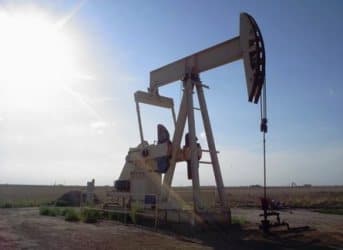While it is hard to ramp up much sympathy for petro-states, Norway and Saudi Arabia are both facing a murky 2013 as domestic production falls, pushing both nations towards some difficult (and expensive) choices.
OPEC’s leading producer Saudi Arabia is facing the twin storms of declining oil production and the rise of global alternatives, threatening its market share.
On the plus side, the U.S. government’s Energy Information Administration in its “Annual Energy Outlook 2013” predicts that by 2020, worldwide production of crude and condensates will hit 99.7 million barrels per day, up from its 2012 level of 89.2 million bpd. Liquid hydrocarbon production will be almost seven million bpd, or seven percent higher than the EIA’s forecast a mere two years ago in its 2011 reference scenario.
The downside? The report notes in its “Annual Energy Outlook 2013 projections to 2040” that both “growth in energy production outstrips consumption growth” and “crude oil production rises sharply over the next decade.”
The extra EIA oil projections are almost as much as Saudi Arabia currently pumps, leading to a scenario whereby for Riyadh, prices will have to fall to stimulate faster consumption growth while discouraging development of rival supply sources.
The news leaves Saudi Arabia in a quandary, attempting both to restrict the amount of new non-OPEC production even as it attempts to persuade OPEC to redistribute the cartel’s production quotas with its principal rivals, Iraq and Iran.
While Iraq has been welcomed back into the world community, its ramshackle, investment starved oil industry is barely pumping above its pre-Operation Desert Storm levels, but that will change as the country stabilizes.
Related Article: Oil Exports, Politics and Propaganda
The wild card for Saudi Arabia remains Iran, OPEC’s second largest producer, which is currently suffering under multiple U.S., EU and UN sanctions, but that scenario could change should Tehran prove more flexible over its civilian nuclear energy program.
This combines with some sobering news from the EIA, which notes in its country field on Saudi Arabia, “One challenge the Saudis face in achieving their strategic vision to add production capacity is that their existing fields experience 6 to 8 percent annual decline rates on average in existing fields, meaning that the country needs around 700,000 bpd in additional capacity each year just to compensate for natural decline. Decline estimates for Saudi Arabia vary widely, however. The Ministry of Petroleum maintains that decline rates in Saudi Arabia are around 2 percent annually. Saudi Aramco has stated that it will also conduct additional drilling at currently producing fields in order to help compensate for the natural declines from the mature fields.
Saudi Aramco, Saudi Arabia’s national oil company, estimates that the average total depletion for Saudi oil fields is 29 percent, with Abqaiq (the oldest) 74 percent depleted, the giant Ghawar field having produced 48 percent of its proven reserves and the younger Shaybah, just 5 percent depleted.”
Saudi Arabia seems to be in the process of becoming a victim of “peak oil.” For whatever one thinks of the theory, simply put, does Saudi Arabia make massive investments to sustain and enhance declining production even as new areas, ranging from Brazil’s offshore salt domes to Angola and Mozambique come online? It’s a question with no easy answers.
Related Article: The Idea of Peak Oil is Left in the Past as Production Increases in the US
Non-OPEC Norway, the world’s eighth largest oil producer, is facing a similar quandary about spending money. As the EIA notes, “Norway is Europe's largest oil producer, the world's second largest natural gas exporter, and is an important supplier of both oil and natural gas to other European countries” but adds, “Norway's petroleum production has been gradually declining since 2001 as oil fields have matured. The Norwegian Petroleum Directorate expects that production will continue to decline slowly over the next few years, and that in the longer term the number and size of new discoveries will be a critical factor in maintaining production levels.”
Norway's petroleum production peaked in 2004 at 4.54 million bpd, but by 2011 production had fallen to 3.8 million bpd. According to the Oljedirektoratet (Norwegian Petroleum Directorate), in 2012 companies operating in Norwegian waters made 14 discoveries totaling 709 million barrels of oil, which included the Barents Sea discovery Havis, Norwegian Sea find Zidane-2 and North Sea find King Lear.
The Oljedirektoratet announced that offshore costs, including pipeline infrastructure in 2013, would hit $36.95 billion. But the government is not fazed with sticker shock;
ADVERTISEMENT
Oljedirektoratet Director General Bente Nyland told reporters, “A high oil price, high level of exploration success and high activity level also set high expectations for the industry. These expectations are laid down in the Petroleum White Paper and deal with just that; making discoveries, developing the discoveries and, not least, improving recovery from producing fields. The increase in the resource estimate and major new discoveries show that the Norwegian shelf still has some surprises left, and that there is good reason for continued optimism on behalf of the oil and gas activities in Norway.”
And who will benefit from these discoveries and potential output? Norway’s five million citizens, beneficiaries of the country’s Statens pensjonsfond – Utland $700 billion oil fund, the largest in the world.
Unlike its North Sea partner Britain, which spent its oil income like a drunken sailor or the Saudis, renowned for their luxurious self-indulgent tastes, the Norwegian government has been carefully salting away its royalties for years.
And unlike Saudi Arabia, not being a member of OPEC leaves Oslo to sell virtually all its output on the global market rather than worrying about quotas. Accordingly, Norway for 2013 has as many reasons to be optimistic as Saudi Arabia does to be nervous.
By. John C.K. Daly of Oilprice.com



















Russia